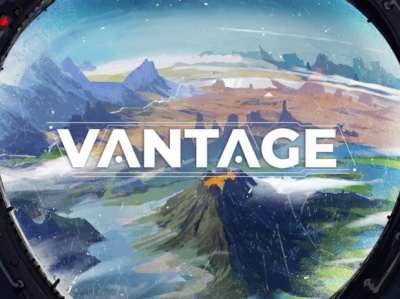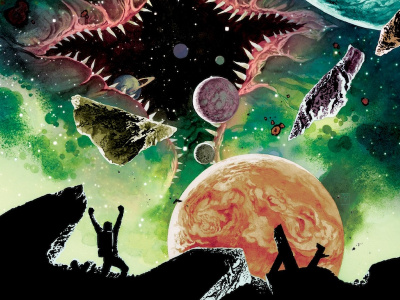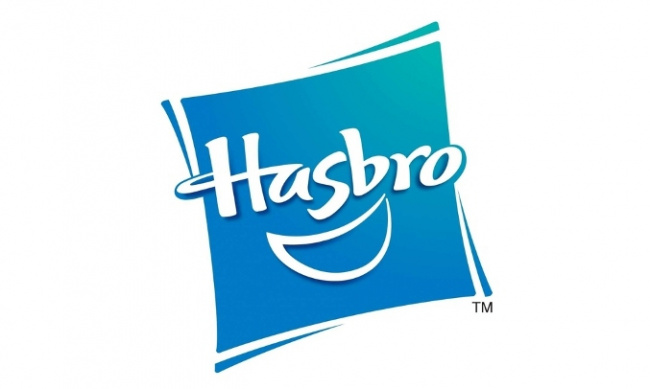
Archaia Entertainment CEO P.J. Bickett believes digital content is bringing comics to a tipping point in which digital offerings are making it possible for print to survive. Archaia Entertainment launched its first title, Days Missing, on comiXology yesterday. This comiXology offering joins Kindle, all the platforms offered by Graphic.ly, and iVerse as the multiple ways in which Archaia content can be accessed digitally.
We talked to Bickett about the new initiative, Archaia’s digital strategy, and his read on the digital role in comic publishing.
You just announced that Days Missing would be your first project with comiXology. Why did you choose that product as your first with comiXology?
We felt that with its history behind the first volume of work and leading up to the completion of the second volume in the next month, it made the most sense to offer the comiXology audience and the Archaia fans that have been clamoring for Archaia products on comiXology the Days Missing product.
Can you describe what you see as the role of digital delivery in your publishing plan?
Digital right now has to be identified in its own terms, just like the new economy identified what “Web” was in 2000. Eventually digital itself, the connotation, will go away, and it will just serve as the distribution channel. In thinking that way about what the future holds for digital distribution and how it plays in Archaia’s business, it’s just another channel that we need to service and service well by providing the unique offerings that Archaia’s become known for.
One role that you’ve used digital for was a couple of titles where you did free chapters while the print version was out of print. You did that with Return of the Dapper Men and Mouseguard. How did that work out?
It worked out great. In that particular instance we were able to secure even more orders.
We had backlist orders that we needed to fill and we went back to press, and as a result of people being able to see the digital version those that heard about the product finally got to see it first- hand themselves, and shortly thereafter, the next week, our orders almost doubled with what was on backorder with Diamond.
What this brings me to is the broader question of how do we use digital, how do we service digital and what do we look for within it. As I’d mentioned, the meaning, the context of digital will go away and it’s becoming about leveraging the many different aspects of your business in how you promote product and how you market product, and at the end of the day, that’s what it’s really about because that’s what translates to sales.
So in the case of how Archaia’s played in the digital space over the years we’ve done Webcomics that had 100,000+ following and converted that into print product that did outstandingly well: Gunnerkrigg Court. We’ve done three reprints on that product at this point in time. And we’re putting out the third volume of the print version. It’s doing very well.
We’ve done direct to digital with the Kindle and Tumor and because of the success we had in the digital world. Again, we’re able to convert that into real success in the paper world.
The most recent one was Grave Doug Freshley, We resolicited that product three different times, and every time initial orders with Diamond were becoming less and less.
We went direct to digital with Graphic.ly, built up an audience base, and went back to solicitation with Diamond, and our orders significantly increased to the point where not only was it viable, it was now profitable.
So digital plays a very big part in how we get carved out in the marketplace, how we leverage our great fan bases, and really promotes the product in a way that will lead to carry-on success with future volumes of work.
Why do you think the digital format is finding a different customer than what you’d done in print? Who do you think those customers are and why are they finding these products in digital instead of print?
The early thought, which I subscribed to, was back in 2009, 2010: people who were really following digital were non-traditional print readers. They were more of your desk jockeys who found it as more of a convenience than anything else to browse comics vs. going into a comic book store.
What I think you’re seeing now, specifically in the instance of Dapper Men and Mouseguard, is everyone always wants to be able to pick up a book and browse it. Even when you’re in a store, even if you’ve heard everything good about the book, you’re not grabbing it and walking to the checkout. You’re going to take some time and take a peek inside and see if it’s everything it’s cracked up to be.
What you’re seeing now is that people are so used to receiving PDFs for proofs in all forms of business and all forms of daily life, this is just a natural extension. So providing a preview on Graphic.ly, in this instance, allowed people to virtually pick up the book and to know, “Hey, this is actually something I do want to place orders on.” Because most orders will continue to migrate toward the Web, whether they’re digital sales or just online sales of print products through Amazon and other retailers. And this is just really the tipping point in terms of how the future of the print business will either thrive or die.
So it might be the same kind of customer but they wanted an opportunity to sample?
If you asked me that same question a year ago I would have had a much different response. But as of late last year and even more so this year, it’s just really the same audience that might not have taken a chance on it before because they weren’t able to get to a store. But now they’re willing to take the chance and buy it online or go to a store and pick it up.







